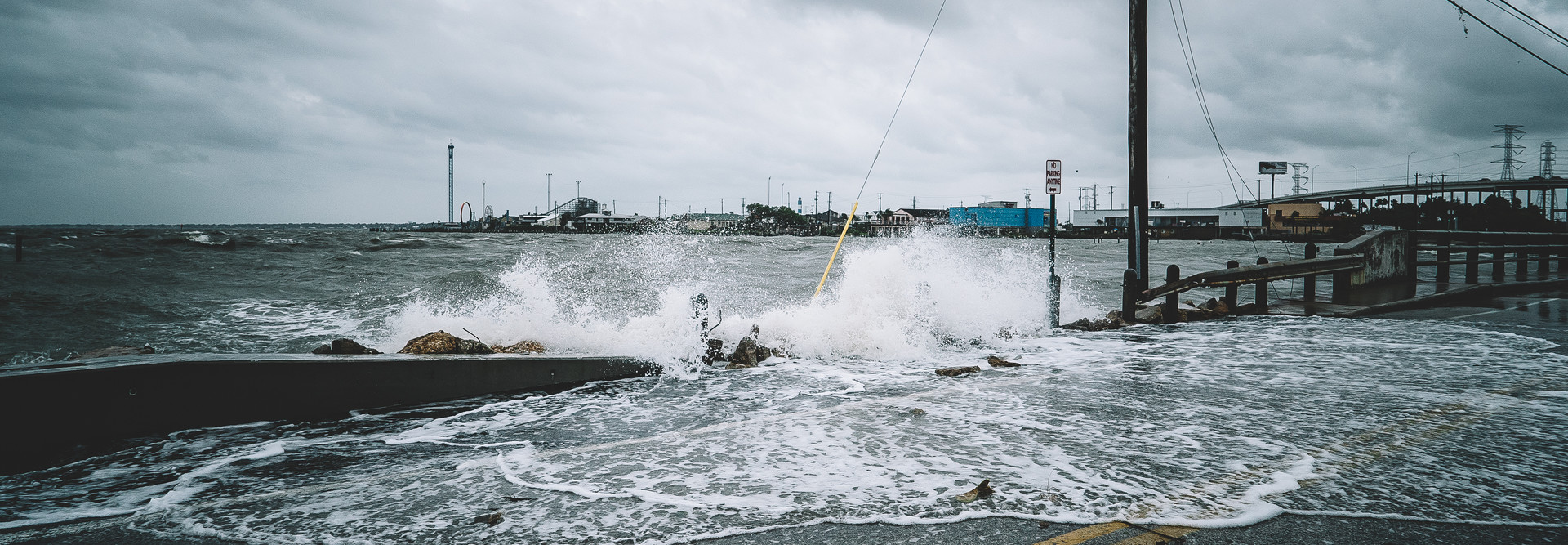Smart City Water Solutions Predict Future Events
The city of Virginia Beach turned to smart water technology so it could have better information for emergency management. The coastal city, which is hit often by hurricanes and other storms and is planning for sea level rise, wanted to know more about its water levels.
“Observational data is important,” says Sridhar Katragadda, lead data scientist for the city. “There was no water observation that could give us the water levels in streams in real time.”
Virginia Beach started deploying smart water sensors in 2015, using them for StormSense, which was developed with the Virginia Institute of Marine Science. It’s a forecasting project that uses street-level hydrodynamic modeling, data from sensors and crowdsourced data collected after floods. It allows city officials to predict floods from storm surges, rain and tides up to 36 hours in advance. StormSense won the best practices category in AWS’ 2017 City on a Cloud challenge.
Katragadda says they started with 10 water level sensors in 2015. There are now more 40 installed in Virginia coastal cities through a cooperative agreement. StormSense also uses data from more than 25 sensors from the National Oceanic and Atmospheric Administration and the U.S. Geological Survey.
In the future, Katragadda says, the city’s smart water program will be ingrained into the lives of its citizens. “This will be part of their daily routine, asking, ‘What is the water level in my neighborhood and how high?’”
Smart Water Management Systems Use Real-Time Tech
The government of Ann Arbor, Mich., uses real-time smart water technology. The city worked with the University of Michigan to develop Open Storm, a package of open-source sensors, hardware and algorithms to measure and control stormwater. Sensor nodes collect data on water flow and quality, then transmit it via a cellular network. It gives a real-time, instant snapshot of water conditions.
As part of the project, student volunteers installed valves on city water systems to open and close after a storm. After flooding, the city can choose to release or throttle the water via remote control valves.
“It’s nice to know what’s happening in real time and have it precisely measured,” Harry Sheehan, chief deputy water resources commissioner for Washtenaw County, Mich., said last year at the Smart Cities Connect Conference and Expo.
Smart Water Technology Makes a Difference in California
Water Foundry’s Sarni says smart cities that want to use smart water technologies should look to California, which is leading the way. The state’s 2014 Sustainable Groundwater Management Act requires “governments and water agencies of high and medium priority basins to halt overdraft and bring groundwater basins into balanced levels of pumping and recharge,” according to the California Department of Water Resources.
Under this law, critically overdrafted basins should reach sustainability by 2040, and high- and medium-priority basins by 2042.
“California has done a very good job in terms of understanding water as a strategic resource asset for the state economy and investing in things,” Sarni says.
In the state’s Solano County, for example, solar-powered sensors are used to detect water flow in real time. According to Wired magazine, farmers send the data from those sensors to small satellites called CubeSats, which work around poor cell service in the area. Farmers can then trade their water on a blockchain platform.
MORE FROM STATETECH: How smart cities turn to the cloud for smart water and other solutions
Smart Water Technology Leads to Stronger Decisions
Sarni says that California also stands out in its smart water direction because of who can see the information drawn from these systems: everyone. The Open and Transparent Water Data Act requires multiple agencies in the state to create, operate and maintain a statewide integrated water data platform that shares information and promotes open-source platforms and decision-support tolls related to water data.
“We need to democratize access to data and actionable information. The layperson should have access to data and understand what it means,” he says.
Fountain Valley was one of many California municipalities hit by drought. Officials deployed smart technology, including smart meters, to let municipal officials see where water was being used, and how. It also gave the community information about water consumption and showed areas of improvement. As a result, the town was able to reduce usage by 23 percent.
This transparency isn’t limited to California. Houston partnered with Microsoft to modernize its infrastructure, and part of that project included providing smart water meters to 500,000 water customers. These meters gather information on water usage every 15 minutes and, in the future, will give customers real-time leak alerts and conservation advice.
Artificial Intelligence and Smart Water Technology
Microsoft also worked with DC Water, a water and sewer utility company, to create the first IoT smart water fountain, which monitors, tracks and reports water quality in real time.
DC Water is also stepping into the world of AI by applying analytics to the watershed treatment process to identify and address operating anomalies with pumps and by developing an IoT platform to monitor wastewater treatment assets, manage energy and avoid costly maintenance.
DC Water used Microsoft’s Cognitive Toolkit to automate detection and classification of pipe anomalies for its 1,900-mile sanitary and combined sewer system. The toolkit has cut the evaluation process from hours to minutes.
“Defects are precisely pinpointed and output from the process will be used to create predictive models for pipe performance, allowing DC Water to make informed, data-driven decisions on replacing or rehabilitating pipes,” according to Microsoft.
“It’s basically facial recognition … for sewer pipes,” Thomas Kuczynski, vice president of IT at DC Water, tells GCN.











